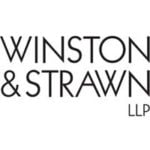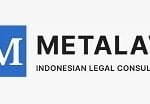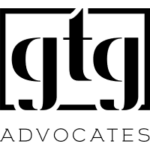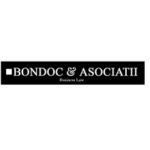-
What are the key rules/laws relevant to M&A and who are the key regulatory authorities?
The key rules/laws are the Corporations Act 2001 (Cth) (Corporations Act) and the Corporations Regulations 2001 (Cth) (Corporations Regulations). These must be considered together with relevant Australian Securities and Investments Commission (ASIC) Regulatory Guides and Takeovers Panel Guidance Notes. ‘Public’ company takeovers and schemes (see Q5) are highly regulated. Private company M&A transactions are implemented under negotiated agreements.
If the acquirer, seller or target is listed on a prescribed financial market in Australia, such as the Australian Securities Exchange (ASX), the rules of that market will also be relevant. Other rules/laws may be relevant depending on the transaction, such as the Foreign Acquisitions and Takeovers Act 1975 (Cth) (if the acquirer is a foreign person), the Competition and Consumer Act 2010 (Cth) (if the parties are competitors) or other specific industry rules/laws.
The key regulatory authorities are ASIC, ASX and the Takeovers Panel. ASIC is Australia’s corporate, markets and financial services conduct regulator. It facilitates, oversees compliance with and provides relief from the Corporations Act. The Takeovers Panel is a specialist tribunal which is the main forum for resolving disputes about takeover bids and related matters. ASX operates Australia’s primary securities exchange and oversees compliance with its listing and operating rules.
If the transaction involves foreign persons acquiring interests in businesses, securities or assets and meets certain thresholds, the Foreign Investment Review Board (FIRB) may need to be notified of, or approve, the transaction. If the transaction involves a merger of competitors which may be anti-competitive, notification to and/or approval from the Australian Competition and Consumer Commission (ACCC) may be required. Reforms for merger control will vastly increase the role played by the ACCC starting from 1 January 2026. Other regulatory authorities (such as industry bodies) may become involved depending on the particular transaction.
-
What is the current state of the market?
In 2024, Australian M&A recovered from the generally more subdued levels of activity experienced during the 2023 calendar year, but remained below the historic highs achieved in 2021 and the sustained elevated activity throughout 2022. ‘Sticky’ inflation and the corresponding increases in interest rates during 2022 and 2023 continued to have a negative effect on the broader Australian economy, which resulted in a lower number of deals completed. However, easing inflation, a 25 basis point reduction in the interest rate in the first quarter of the 2025 calendar year and heightened expectations of further interest rate cuts in the second half of 2025 could give businesses the confidence needed to re-enter the M&A market.
Given the elevated cost of bank finance and low levels of activity in Australia’s public capital markets compared to long term trend levels, private capital continues to be the dominant source of deal funding. Australian public listed companies were taken private at a higher rate in 2024 than in recent years, reflecting the depth of the private capital pool.
The difficulty of raising capital on public markets also prompted more companies to look to M&A to alleviate their high debt levels, with mergers involving heavily indebted companies and those with significant cash reserves a recurring theme.
The private M&A market continues to be busy, although transactions are moving more slowly as buyers closely scrutinise valuations and access to funding remains tight.
As the interest rate easing cycle continues, both public and private capital markets are expected to rebound and, subject to other external factors, the pace of dealmaking may quicken.
-
Which market sectors have been particularly active recently?
As a large energy and commodities producer and exporter, Australia has seen increased M&A activity in the energy and resources sector in recent years as the world accelerates its energy transition. This includes an increasing focus on ‘green’ metals (copper and nickel) and critical minerals (rare earths and lithium) fundamental to production of the batteries and magnets required for decarbonisation. The metals and mining sector was responsible for 37% of deals in 2024, up from 30% in the previous year.
A major theme during 2024 has been the fortunes of the lithium mining industry. In 2023, we observed a series of high-profile transactions, by which Australian mining billionaires repeatedly acquired significant stakes in emerging lithium explorers subject to takeover bids by global lithium producers in order to effectively block the transactions and/or draw those rival bidders to the negotiating table. In 2024, as the depressed price for lithium continued to weigh there were a number of countercyclical transactions (e.g. Pilbara Minerals’ acquisition of Latin Resources, Rio Tinto’s acquisition of Arcadium Lithium and the merger between Piedmont Lithium and Sayona Mining). We expect consolidation in the lithium industry to continue, particularly as lower prices put pressure on margins.
Driven by historic highs in the gold price, the gold industry is currently experiencing a wave of consolidation as companies seek to acquire nearby competitors and thereby achieve superior production costs. We expect this activity to continue as mid-sized producers scale up their operations to make the most of the high gold price.
One of the most active sectors for M&A activity in Australia in the last 12 months has been technology, including both software (e.g. Renesas’ acquisition of Altium for A$9.1 billion) and digital-enabling infrastructure providers (e.g. Blackstone’s acquisition of AirTrunk for A$24 billion), with private capital being particularly active. Long life real assets such as property (office, retail, industrial, healthcare and farmland) and infrastructure (transportation, social, and digital) have also been active despite the rise in interest rates.
Competition has also developed for listed funds management businesses, with suitors targeting those companies trading at a discount to their net tangible assets.
-
What do you believe will be the three most significant factors influencing M&A activity over the next 2 years?
We expect:
- Energy security and transition will continue to be a major theme given Australia’s status as a politically stable commodity exporting country. The collapse in the price of battery metals such as nickel and lithium is an example of the type of volatility that can be expected to have a material effect on the pace of this transition and corresponding deal activity. We also expect that increasing investment in the development of renewable energy projects and associated infrastructure will be a major source of deals. In addition, potential changes to the Inflation Reduction Act energy credits regime and critical minerals funding as well as shifts in political preferences with respect to Australia’s domestic energy mix will have flow on effects to the attractiveness of M&A in certain sectors of the Australian economy.
- Global geopolitical uncertainty and political instability as well as the nascent trade war between the United States and several of its key trading partners are likely to have a significant impact on global capital flows and the attractiveness of deal-making in certain jurisdictions and industries. It remains unclear whether Australia will be a net beneficiary of this geopolitical upheaval. Given Australia’s relative political stability and status as a critical exporter of raw materials to the world, we expect that Australia will continue to be an attractive destination for foreign investment and as such we expect that the next two years will see the continuation of the recent uptick in foreign acquirers pursuing Australian M&A deals.
- Given the slower-than-expected pace of the interest rate easing cycle, private capital, including superannuation and sovereign wealth funds, will continue to have a significant role in funding M&A activity as debt finance remains costly and public capital markets are yet to regain their vigour. However, if inflation returns to the Reserve Bank of Australia’s target range of 2 to 3% and if interest rates fall at a faster-than-expected rate, we expect a rebound of leverage-based M&A activity from recent lows.
-
What are the key means of effecting the acquisition of a publicly traded company?
Takeovers laws prohibit the acquisition of a relevant interest in Australian listed companies, and in unlisted Australian companies with more than 50 members, which result in the voting power of any person increasing to more than 20% (or from a starting point that is above 20% and below 90%), other than in accordance with the exceptions provided for in the Corporations Act.
A publicly traded company may be acquired by:
- ‘takeover offer’ to acquire voting shares in listed companies or unlisted companies with more than 50 members by making ‘on-market’ bids by acquiring shares on-market from shareholders wishing to sell, or ‘off-market’ bids which require selling shareholders to provide acceptance forms to the acquirer; or
- ‘scheme of arrangement’ to acquire securities in companies which are recommended by the target’s directors and approved by shareholders and the court.
Takeovers must comply with Chapter 6 of the Corporations Act and schemes must comply with Part 5.1 of the Corporations Act.
Off-market takeover bids are more common than on-market bids, for example as the former allow the acquirer flexibility to make offers for some (rather than all) of the target’s securities, and to impose conditions on the bid and to offer non-cash consideration. If, by the end of the bid period, the acquirer has ‘relevant interests’ in at least 90% (by number) of the securities in the bid class and has acquired at least 75% (by number) of the securities that the acquirer offered to acquire under the bid, it can compulsorily acquire the remaining securities in that class.
Schemes guarantee the acquirer 100% ownership of the target if the scheme is approved by shareholders and the court. The shareholder approvals required are more than 50% (by number) of the members of the class present and voting (unless the court orders otherwise) and 75% of the votes cast on the resolution.
To undertake a takeover:
- the acquirer prepares a bidder’s statement, lodges it with ASIC, ASX and the target, and despatches it to the target’s shareholders. This statement provides the target’s shareholders with information on the offer and other information known to the acquirer that is material to a shareholder’s decision whether to accept the offer. It may need to include an independent expert’s report, including if the bidder or an associate provided, or agreed to provide, consideration (which was not cash or relevant quoted securities) for a security in the bid class during the 4 months before the date of the bid;
- the target prepares a target’s statement, lodges it with ASIC, ASX and the acquirer and despatches it to the target’s shareholders. This statement contains the target’s response to the bid and must contain each director’s recommendation on whether to accept the bid (or reasons why a recommendation is not made) and all other information that shareholders require to make an informed assessment whether to accept the offer under the bid. It may need to include an independent expert’s report opining on whether the bid is fair and reasonable if the acquirer is connected with the target;
- the target’s shareholders decide whether to accept the offer;
- the offer closes and (if all conditions are satisfied or waived) the acquirer acquires the securities; and
- if the acquirer has achieved the compulsory acquisition thresholds, it can commence compulsorily acquiring the remaining securities in that class (see Q28).
To undertake a scheme:
- the acquirer and the target enter into a Scheme Implementation Agreement which contains the terms of the scheme including the consideration payable and any conditions to the scheme;
- the target announces the scheme;
- the target prepares the scheme booklet which contains information that is material to the making of a decision by the target’s shareholders whether to approve the scheme. A formal scheme of arrangement document, which sets out the terms of the scheme between the target and its shareholders, and a deed poll, which sets out the acquirer’s undertaking to perform its scheme obligations such as pay the target’s shareholders their consideration, are both annexed to the scheme booklet. The court and ASIC also expect scheme booklets to include an independent expert’s report (commissioned by the target) opining on whether the scheme is in the best interests of the target’s shareholders. There are also certain statutory requirements to commission such reports;
- the target lodges the draft scheme documents with ASIC, and ASIC has 14 days to review the documents;
- the first court hearing is held to seek court approval for the issue of the scheme booklet and court order to convene a meeting of the target’s shareholders to consider the scheme;
- the shareholder meeting is held to approve the scheme;
- if shareholders approve the scheme, the second court hearing is held to seek court approval to implement the scheme;
- the scheme is implemented and the acquirer acquires the securities; and
- if the target was listed, it is delisted.
-
What information relating to a target company is publicly available and to what extent is a target company obliged to disclose diligence related information to a potential acquirer?
Listed companies must publicly disclose price sensitive information to the market on a continuing basis. They must also disclose their annual and half-yearly financial reports, corporate governance information and other material information.
Directors of, and substantial holders of shares in, listed companies must also notify the market of their holdings.
A target is not obliged to disclose non-publicly available information to a potential acquirer, but in considering whether to grant due diligence access, the target’s directors must comply with their fiduciary duties (see Q9) and (if applicable) the Takeovers Panel’s policies. Information that is so disclosed may need to be disclosed in a bidder’s/target’s statement or scheme booklet to satisfy the Corporations Act disclosure requirements.
-
To what level of detail is due diligence customarily undertaken?
This depends on the acquirer’s requirements. In legal due diligence, the acquirer’s lawyers typically:
- review documents such as the target’s constitution and material contracts;
- conduct searches of the target on various public registers; and
- request the target to identify issues such as breaches of laws and current disputes.
If the acquirer offers scrip consideration (see Q14), the target will undertake due diligence on the acquirer to confirm the value of those securities.
-
What are the key decision-making bodies within a target company and what approval rights do shareholders have?
The key decision-making body of the target company is its board of directors.
In a takeover, each shareholder has the right to accept or reject the offer and in a scheme, shareholder approval is required to undertake the scheme (see Q5); however, reluctant shareholders may be forced to sell (see Q5 and Q28). In a private M&A transaction, shareholders may have ancillary approval rights under law (e.g. financial assistance (see Q20)), or under the company’s constitution or shareholders’ agreement if those documents state that shareholder approval is required to undertake the transaction.
-
What are the duties of the directors and controlling shareholders of a target company?
Directors’ primary duty is to act in good faith in the best interests of the company and for a proper purpose (among various other duties).
Directors should remain open to rival offers which are in the best interests of shareholders (‘superior proposals’) and only support/recommend offers which they consider to be in shareholders’ interests in the absence of a superior proposal. If a target gives an acquirer exclusivity (see Q12) or other protections (see Q13), directors must ensure they are subject to appropriate carve-outs which recognise their duties.
Controlling shareholders do not have fiduciary duties to the company; however, minority shareholders have certain protections under corporations laws if they are oppressed (see also Q27). A private company’s constitution or shareholders’ agreement may impose duties/obligations on controlling shareholders and/or rights on minority shareholders, such as requiring special resolutions of shareholders to proceed with M&A transactions.
-
Do employees/other stakeholders have any specific approval, consultation or other rights?
Not generally, although employees and other stakeholders, such as suppliers, customers, landlords or regulators, may have specific approval, consultation or other rights if they are conferred under their contracts with the target company, laws or rules. For example, a target’s contract with a supplier may require it to obtain the supplier’s consent before implementing an M&A transaction.
-
To what degree is conditionality an accepted market feature on acquisitions?
Other than on-market takeover bids, which must be unconditional, all acquisitions are commonly conditional.
Common conditions for off-market takeover bids include ‘minimum acceptance conditions’ that require a minimum amount of offers to be accepted, conditions prohibiting the target from making changes to its capital structure, conditions requiring the acquirer to obtain regulatory approvals and conditions relating to material adverse changes to the target. In addition to certain other restrictions, bids cannot include ‘maximum acceptance conditions’ that allow the acquirer to terminate its offers for securities, or to reduce the consideration, once a certain level of acceptances/shareholding is reached.
Common conditions for schemes include court, shareholder and regulatory approvals (to facilitate the scheme process), and there being no material adverse change to the target.
Common conditions for private M&A transactions include obtaining regulatory approvals and change in control consents from material customers/suppliers, and there being no material adverse change to the target.
There are a multiplicity of potential additional conditions, which may be tailored to best suit the circumstances and objectives involved.
-
What steps can an acquirer of a target company take to secure deal exclusivity?
An acquirer can request exclusivity from the target company. If it agrees, the parties will enter into an exclusivity arrangement which may contain ‘no-shop’, ‘no-due-diligence’ and ‘no-talk’ restrictions and other rights, such as ‘notification rights’ and ‘matching rights’ in the event a competing bid emerges (see also Q13). Deal protection provisions are heavily regulated in relation to public M&A (including by the Takeovers Panel and by ASIC), so they need to be crafted with care.
-
What other deal protection and costs coverage mechanisms are most frequently used by acquirers?
For a scheme or takeover, an acquirer may require the target to pay a ‘break fee’ if certain events occur which prevent the acquirer’s offer from proceeding, such as the target accepting a superior proposal or breaching the implementation agreement which it has signed with the bidder. The Takeovers Panel generally considers that, absent other unacceptable factors, a break fee not exceeding 1% of the equity value of the target is acceptable in the case of a binding agreement.
An acquirer may require the target to agree to ‘no-shop’ restrictions, where the acquirer cannot solicit alternative offers, ‘no-due-diligence’ restrictions, where the acquirer cannot give alternative acquirers access to due diligence information or ‘no-talk’ restrictions, where the acquirer cannot negotiate with alternative acquirers. These mechanisms should be drafted in accordance with the Takeovers Panel’s guidance on deal protection devices (Guidance Note 7) (if applicable) and certain of them must have carve-outs to enable the target directors to comply with their duties (e.g. see Q9).
The Takeovers Panel has updated Guidance Note 7 to clarify certain circumstances in which ‘hard’ exclusivity provisions (i.e., exclusivity arrangements without an effective “fiduciary out”) may be unacceptable.
-
Which forms of consideration are most commonly used?
Consideration can include cash and/or non-cash consideration. Non-cash consideration can include securities in the acquirer (‘scrip’). The use of ‘stub equity’ has also become more prevalent, but is subject to regulatory requirements.
-
At what ownership levels by an acquirer is public disclosure required (whether acquiring a target company as a whole or a minority stake)?
An investor must publicly disclose its ownership in a listed company once it acquires a ‘substantial holding’ in the company, being an actual or deemed ‘relevant interest’ in at least 5% of the votes attached to voting shares in the company. The relevant interests of an investor’s ‘associates’ are aggregated with the investor’s relevant interests, when determining whether they are a substantial holder.
Various additional disclosures are required, such as certain changes in substantial holdings (or ceasing to be a substantial holder), and disclosures in the context of a takeover bid or scheme.
In addition, the Australian Government is proposing changes to Australia’s beneficial ownership regime, which would mandate disclosure of a broader range of interests, including by requiring reporting of derivative-based relevant interests by substantial holders (albeit that is broadly consistent with existing Takeovers Panel guidance).
-
At what stage of negotiation is public disclosure required or customary?
If the target is a listed company, public disclosure by the target of a ‘friendly’ takeover or scheme is required once negotiations are complete and the target has either entered into a legally binding agreement or is otherwise committed to proceeding with the transaction. The target may be required to disclose earlier in certain circumstances, such as if the transaction leaks to the market. The target may (subject to any contractual fetters) voluntarily disclose earlier for strategic reasons, such as if it wishes to encourage further offers.
The disclosure rules are complex and require particular advice according to the relevant circumstances.
-
Is there any maximum time period for negotiations or due diligence?
No; however, the parties may agree that the acquirer has a limited period of time to complete negotiations/due diligence after which either or both parties may terminate negotiations/due diligence.
-
Is there any maximum time period between announcement of a transaction and completion of a transaction?
With respect to an off-market or on-market takeover bid, the maximum period of time between the launch and completion of a transaction is 12 months. In addition, around four to six weeks may be required after reaching 90% ownership under a takeover bid to complete the compulsory acquisition (refer to Q28).
A scheme of arrangement typically lasts three to four months from announcement to completion. However, given the requirements for regulatory approval (including potential judicial review) for some transactions, the timeframe for completion of a scheme of arrangement may extend for a longer period of time (e.g. until such time as regulatory approval is obtained).
There are no time restrictions for private M&A.
-
Are there any circumstances where a minimum price may be set for the shares in a target company?
In a takeover, the minimum price the acquirer can offer must be at least equal to the maximum consideration that the acquirer or an associate provided, or agreed to provide, for a security in the bid class in the four months before the date of the bid. There are also various other rules which can impact on pricing.
In a private M&A transaction, the target company’s constitution or shareholders’ agreement may set minimum price requirements.
-
Is it possible for target companies to provide financial assistance?
Yes, a target company may financially assist a person to acquire shares in the target company or its holding company provided that (in addition to considering other legal matters):
- giving the assistance does not materially prejudice the interests of the target company or its shareholders, or the target’s ability to pay its creditors; or
- the financial assistance is approved by the target and (in certain circumstances) its ultimate holding company, in accordance with the Corporations Act; or
- the giving of the financial assistance falls within an exception in section 260C of the Corporations Act.
-
Which governing law is customarily used on acquisitions?
The target’s (or, in certain circumstances, the acquirer’s) place of incorporation. Even in circumstances where the acquirer is Australian and the target is incorporated in a foreign jurisdiction, the acquirer may still need to have regard to certain Australian takeovers requirements, including the Takeovers Panel’s Guidance Note 7 (e.g. in negotiating a mutual “fiduciary out”).
-
What public-facing documentation must a buyer produce in connection with the acquisition of a listed company?
In a takeover, the acquirer must produce a bidder’s statement. In a scheme, the acquirer must assist with producing a scheme booklet and associated documents (see Q5).
-
What formalities are required in order to document a transfer of shares, including any local transfer taxes or duties?
A share transfer form that complies with the Corporations Act and Corporations Regulations must be signed and delivered to the company with the existing share certificates for cancellation. If the shares are quoted on a securities exchange, such as ASX, they are typically transferred electronically via a prescribed clearing and settlement facility.
There are no transfer duties imposed on transfers of shares in listed public companies in Australia. There may be duties imposed on “land rich” non-listed company share transfers.
Australian taxation laws with respect to capital gains or losses and revenue gains or losses will apply, depending upon the individual taxation position of the respective sellers and acquirers of shares.
-
Are hostile acquisitions a common feature?
Hostile acquisitions are generally less common than friendly acquisitions. For example, targets are not generally compelled to provide acquirers with due diligence information (see Q6) (but the target directors need to take advice on their duties in the particular circumstances), and because winning the target board’s recommendation of a friendly deal is often viewed as increasing the prospects of success.
-
What protections do directors of a target company have against a hostile approach?
If a target company receives a hostile approach, provided they comply with their directors’ duties and (if applicable) Takeovers Panel policies (see Q9) and the disclosure (and other) obligations pursuant to the Corporations Act and ASX Listing Rules, its directors may:
- make an informed recommendation to target shareholders as to whether they should accept or reject the offer;
- disclose positive information about the target;
- solicit superior proposals from other potential acquirers; or
- (if applicable) refer the bid to the Takeovers Panel if there are unacceptable circumstances involved.
-
Are there circumstances where a buyer may have to make a mandatory or compulsory offer for a target company?
In certain circumstances, a bidder with a relevant interest in 90% or more of the shares in an Australian company must offer to buy out the remainder of the shares (and, in certain circumstances, convertible securities). In addition, the exceptions to the 20% prohibition summarised in Q5 include making a takeover bid.
-
If an acquirer does not obtain full control of a target company, what rights do minority shareholders enjoy?
Minority shareholders with at least 5% of the votes in the target have rights to compel meetings or resolutions to be proposed at meetings (among other rights). Minority shareholders may also have rights under a private target company’s constitution or shareholders’ agreement, such as ‘tag along rights’ to tag along with a subsequent sale of shares in the target by the acquirer or special voting rights.
If minority shareholders consider themselves oppressed by majority shareholders, they may apply to the court for remedial orders such as orders requiring or restraining persons from doing certain things.
-
Is a mechanism available to compulsorily acquire minority stakes?
In a public M&A context, an acquirer can launch a takeover and, if the acquirer reaches the compulsory acquisition thresholds, it can compulsorily acquire minority stakes, or acquire 100% ownership if it successfully completes a scheme of arrangement (see Q5).
In a private M&A context, the target company’s shareholders’ agreement may contain ‘drag along’ provisions which allow majority shareholders to force minority shareholders to sell their shares to the acquirer.
There are also certain general compulsory acquisition powers which have broad application under the Corporations Act.
Australia: Mergers & Acquisitions
This country-specific Q&A provides an overview of Mergers & Acquisitions laws and regulations applicable in Australia.
-
What are the key rules/laws relevant to M&A and who are the key regulatory authorities?
-
What is the current state of the market?
-
Which market sectors have been particularly active recently?
-
What do you believe will be the three most significant factors influencing M&A activity over the next 2 years?
-
What are the key means of effecting the acquisition of a publicly traded company?
-
What information relating to a target company is publicly available and to what extent is a target company obliged to disclose diligence related information to a potential acquirer?
-
To what level of detail is due diligence customarily undertaken?
-
What are the key decision-making bodies within a target company and what approval rights do shareholders have?
-
What are the duties of the directors and controlling shareholders of a target company?
-
Do employees/other stakeholders have any specific approval, consultation or other rights?
-
To what degree is conditionality an accepted market feature on acquisitions?
-
What steps can an acquirer of a target company take to secure deal exclusivity?
-
What other deal protection and costs coverage mechanisms are most frequently used by acquirers?
-
Which forms of consideration are most commonly used?
-
At what ownership levels by an acquirer is public disclosure required (whether acquiring a target company as a whole or a minority stake)?
-
At what stage of negotiation is public disclosure required or customary?
-
Is there any maximum time period for negotiations or due diligence?
-
Is there any maximum time period between announcement of a transaction and completion of a transaction?
-
Are there any circumstances where a minimum price may be set for the shares in a target company?
-
Is it possible for target companies to provide financial assistance?
-
Which governing law is customarily used on acquisitions?
-
What public-facing documentation must a buyer produce in connection with the acquisition of a listed company?
-
What formalities are required in order to document a transfer of shares, including any local transfer taxes or duties?
-
Are hostile acquisitions a common feature?
-
What protections do directors of a target company have against a hostile approach?
-
Are there circumstances where a buyer may have to make a mandatory or compulsory offer for a target company?
-
If an acquirer does not obtain full control of a target company, what rights do minority shareholders enjoy?
-
Is a mechanism available to compulsorily acquire minority stakes?





























